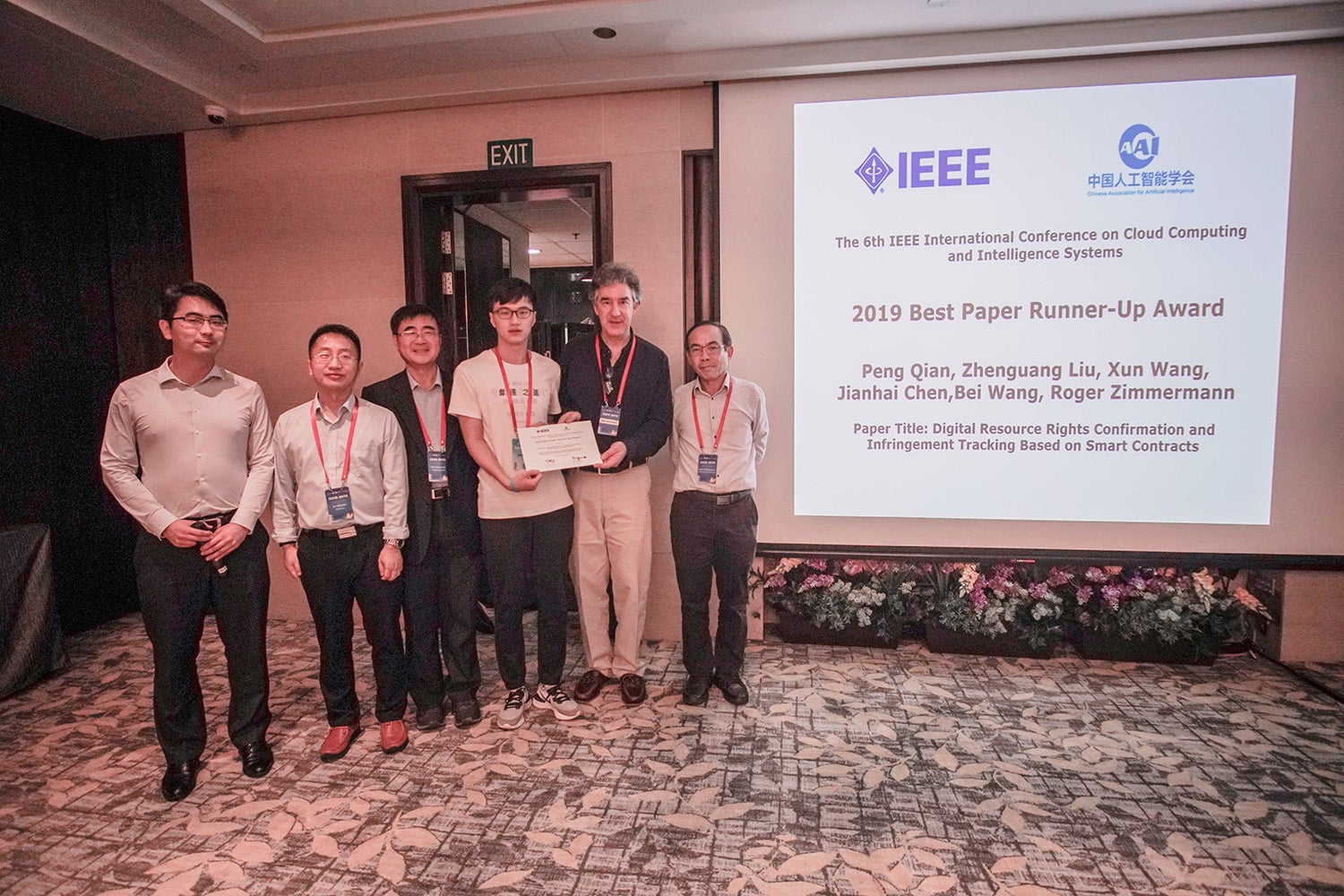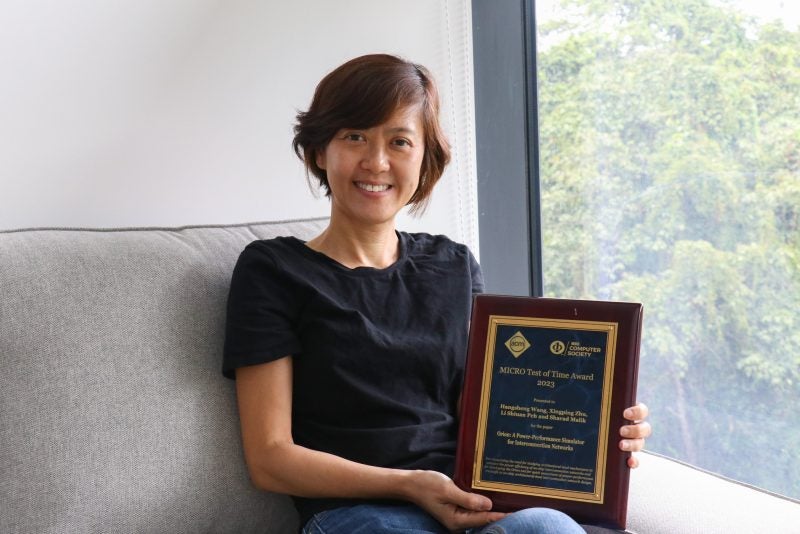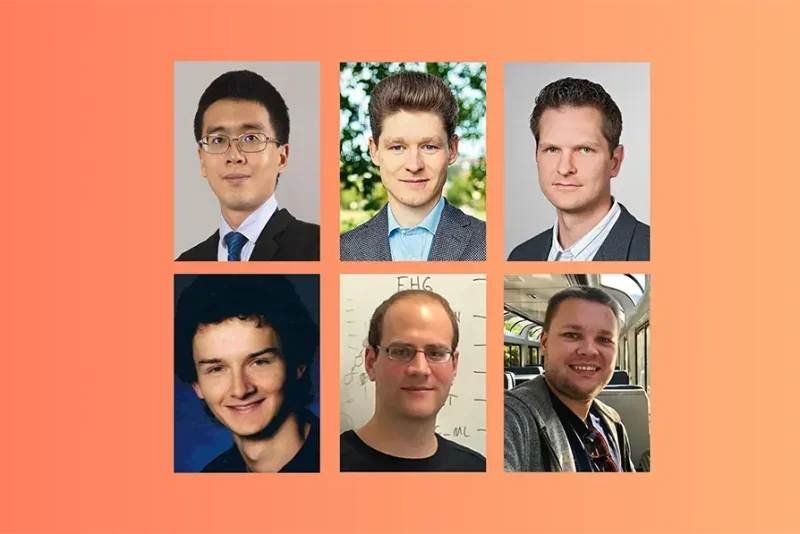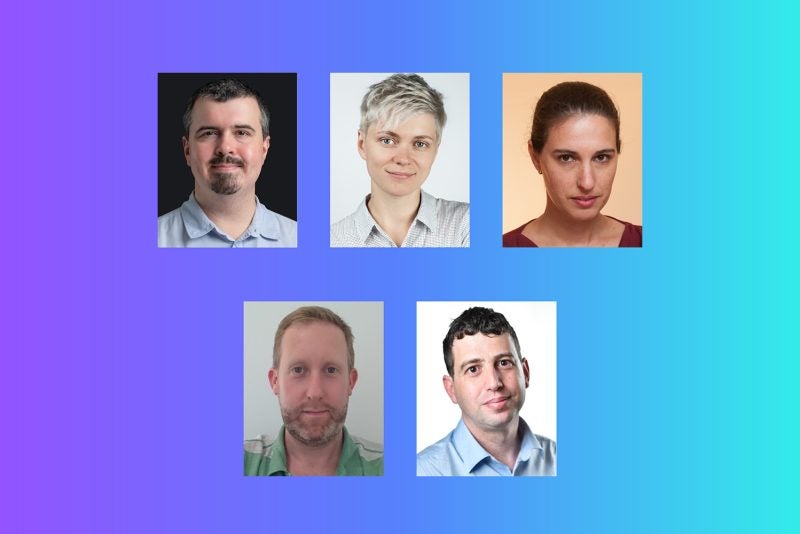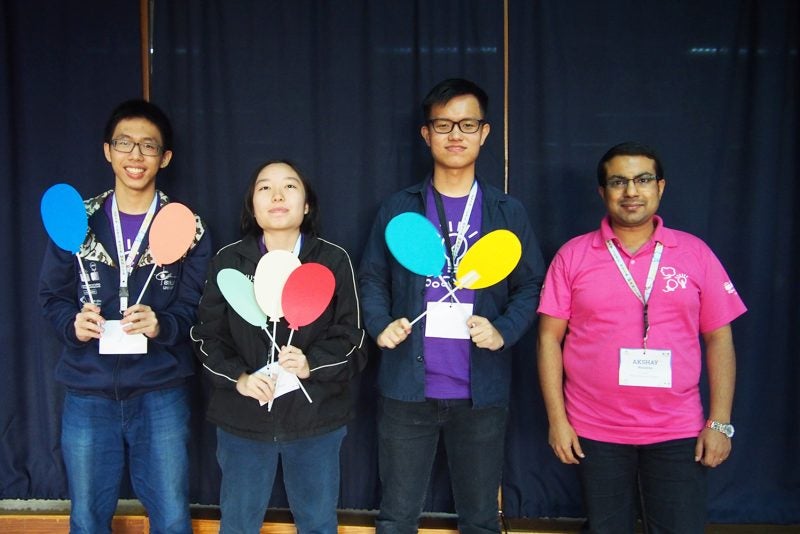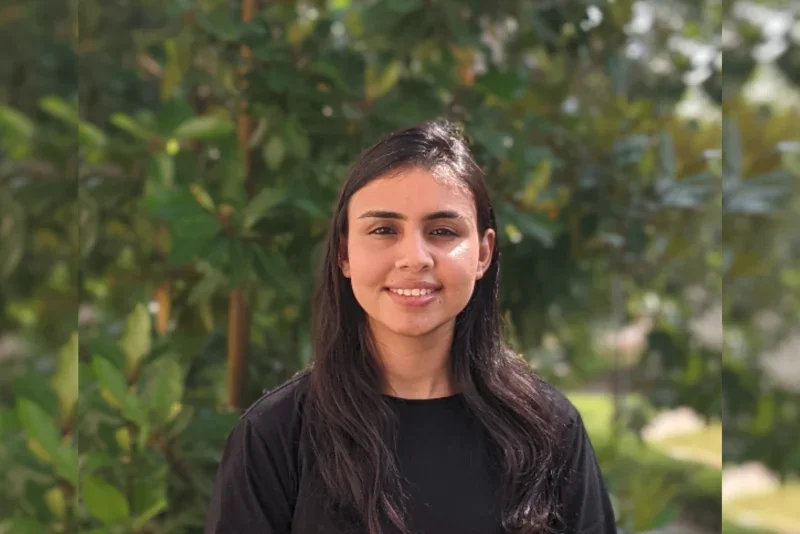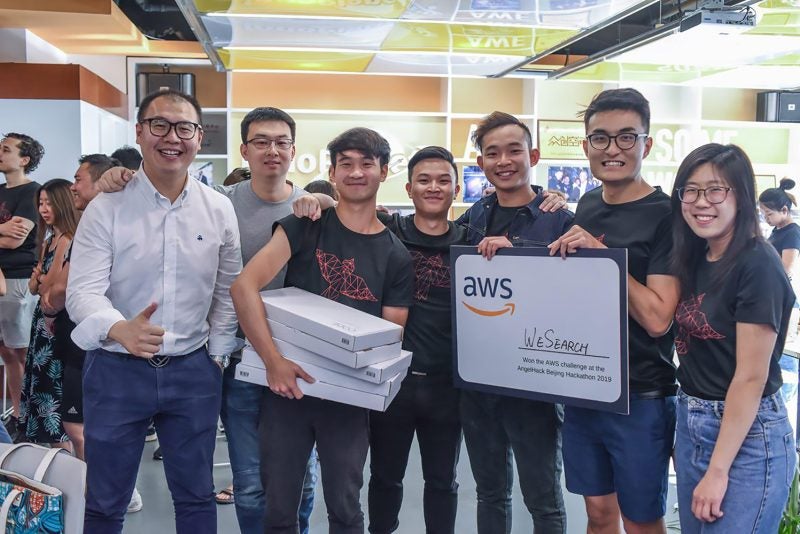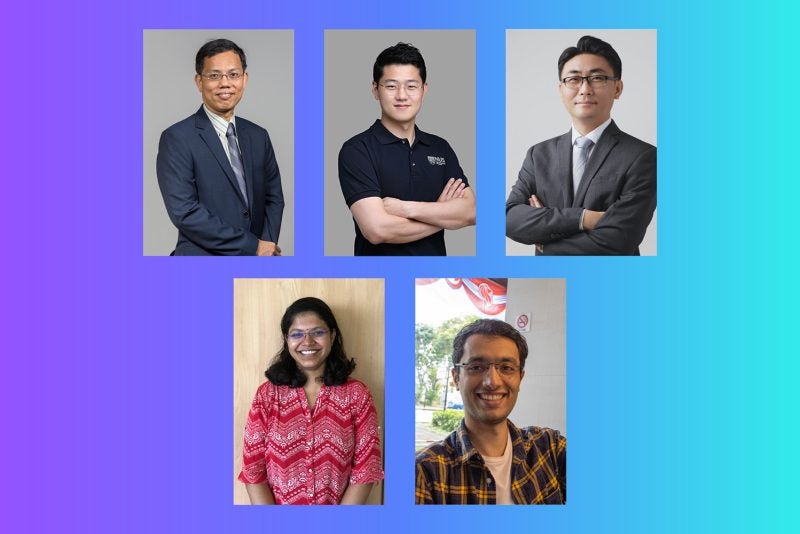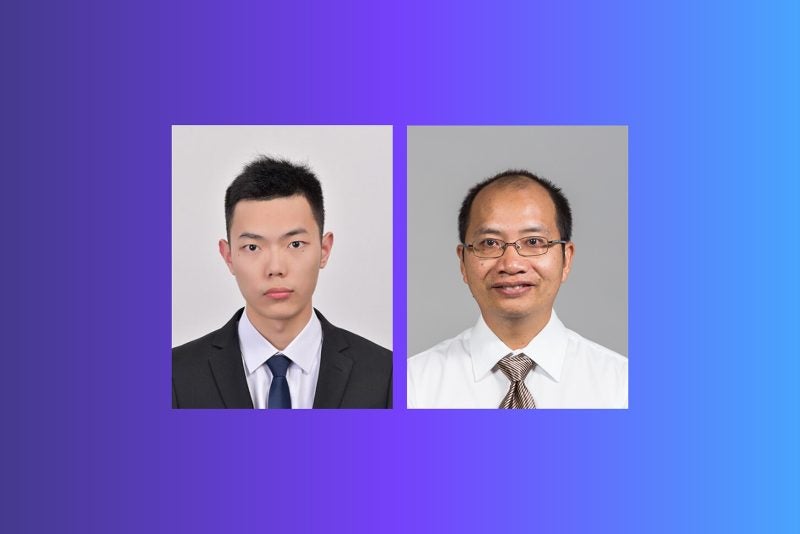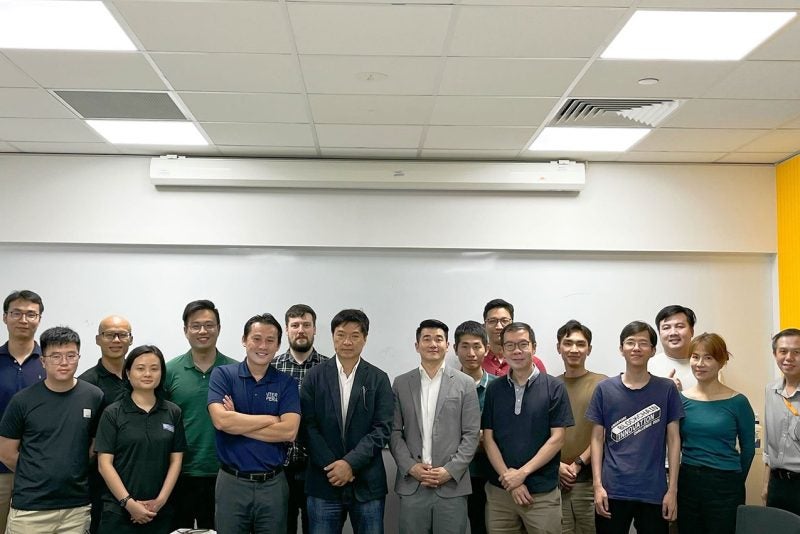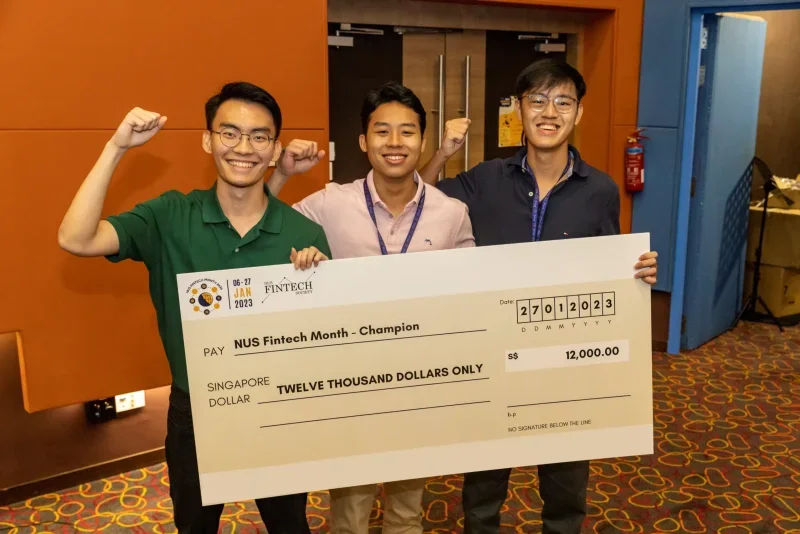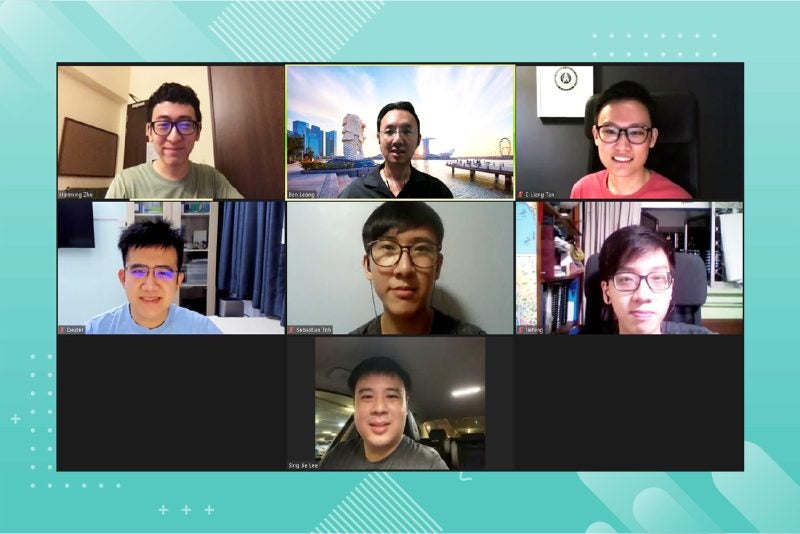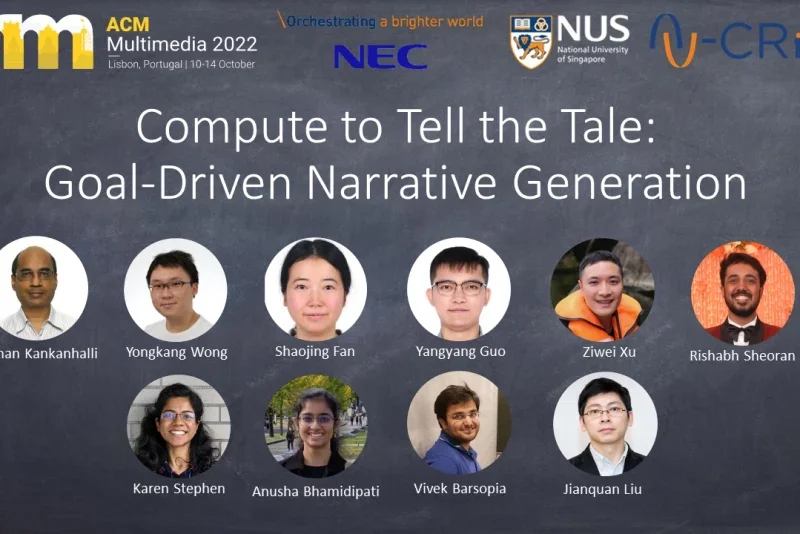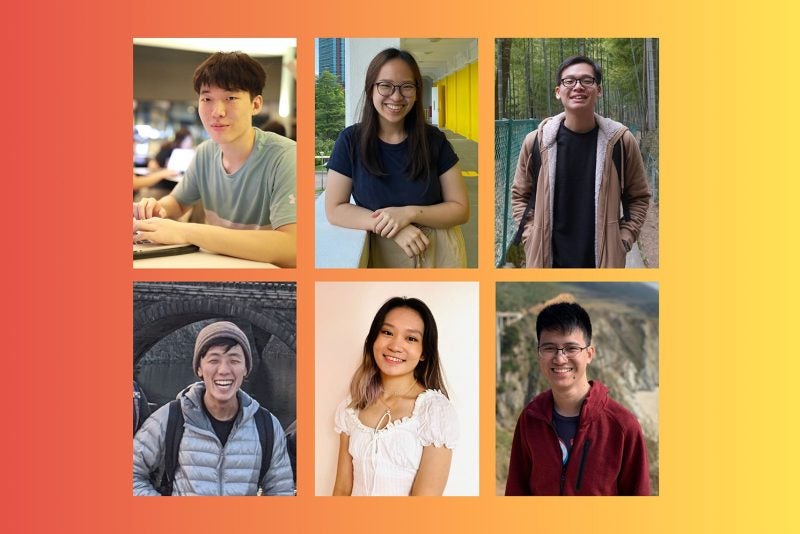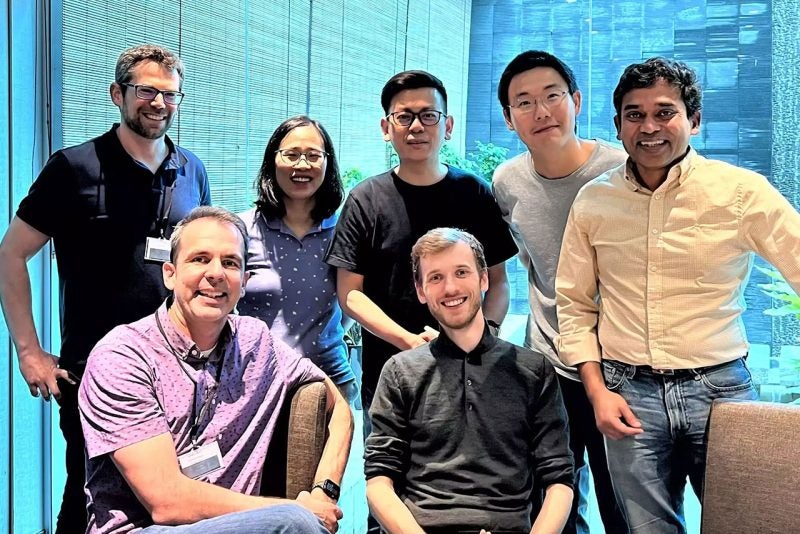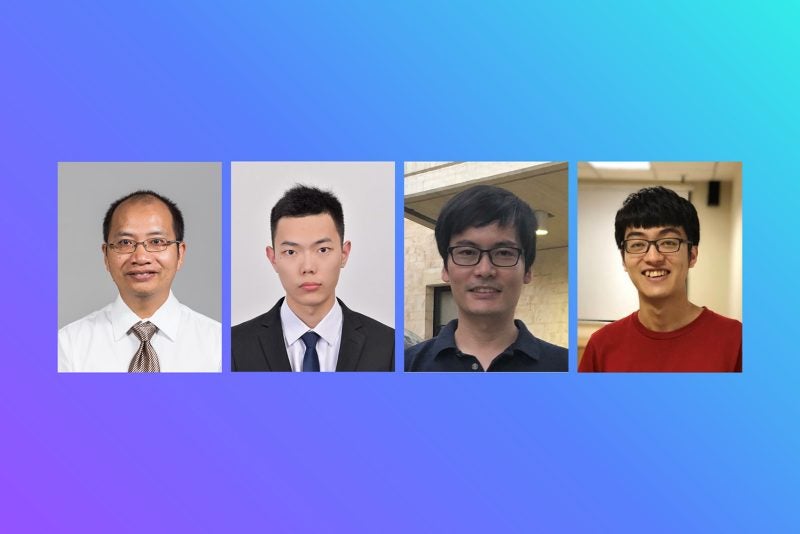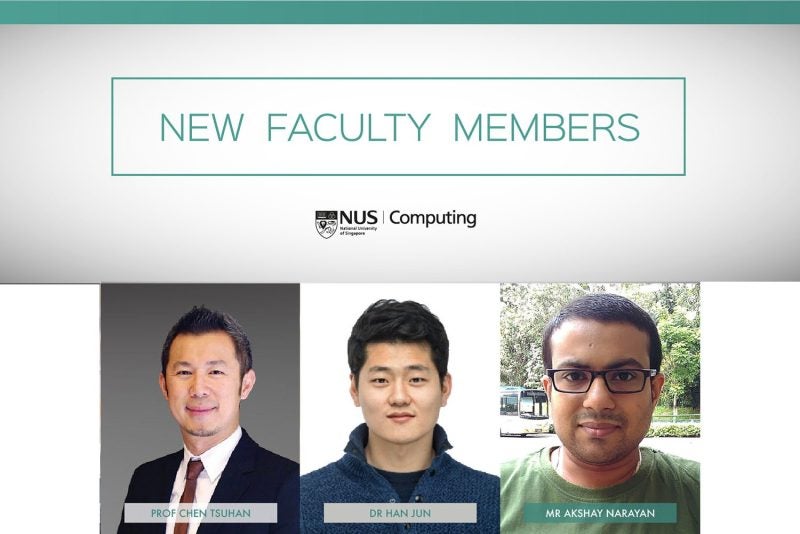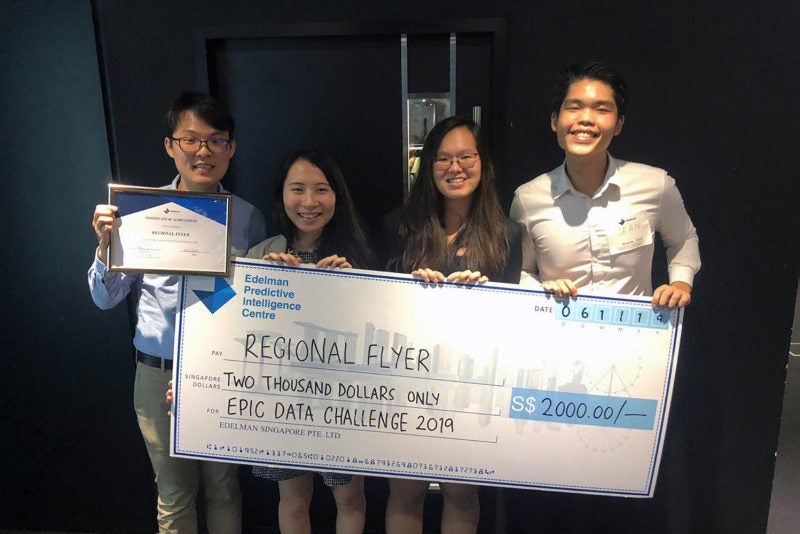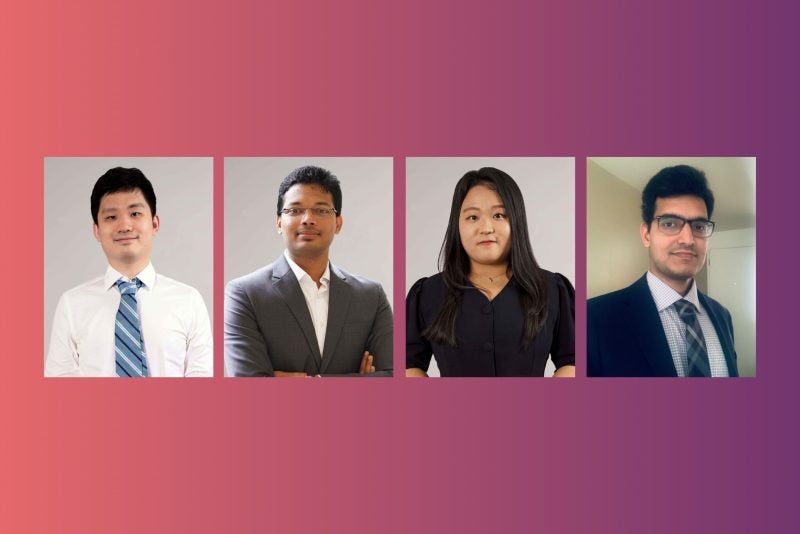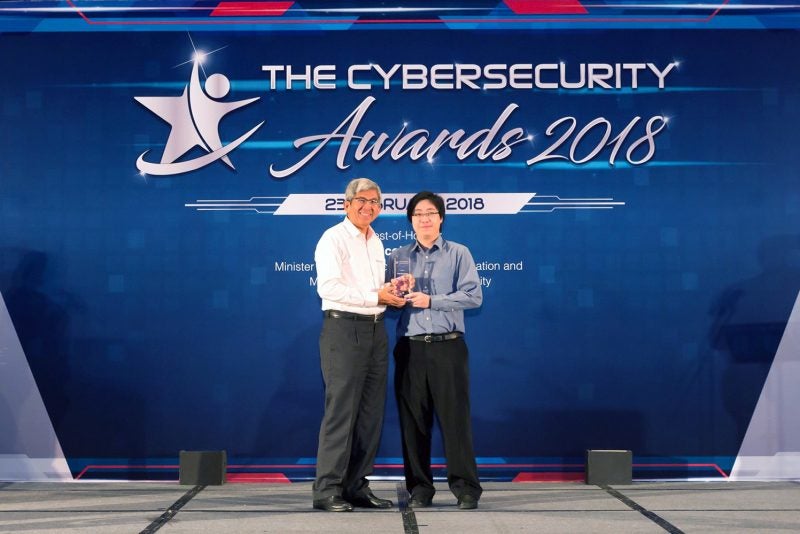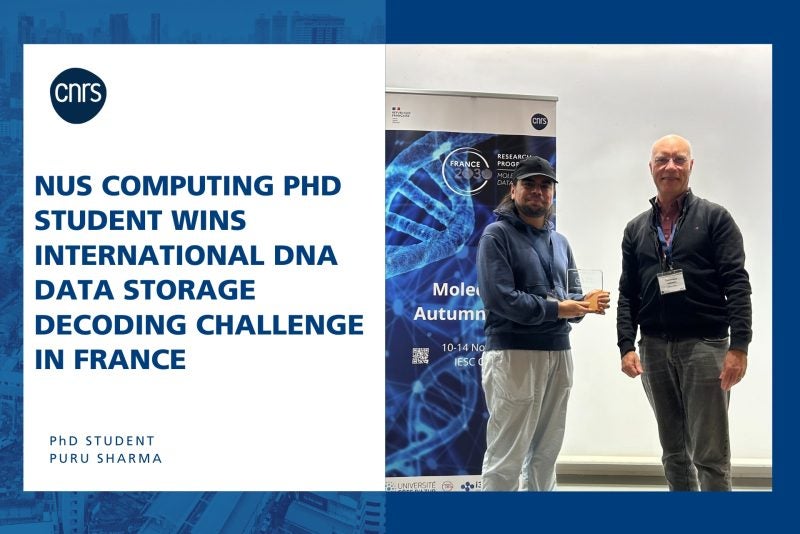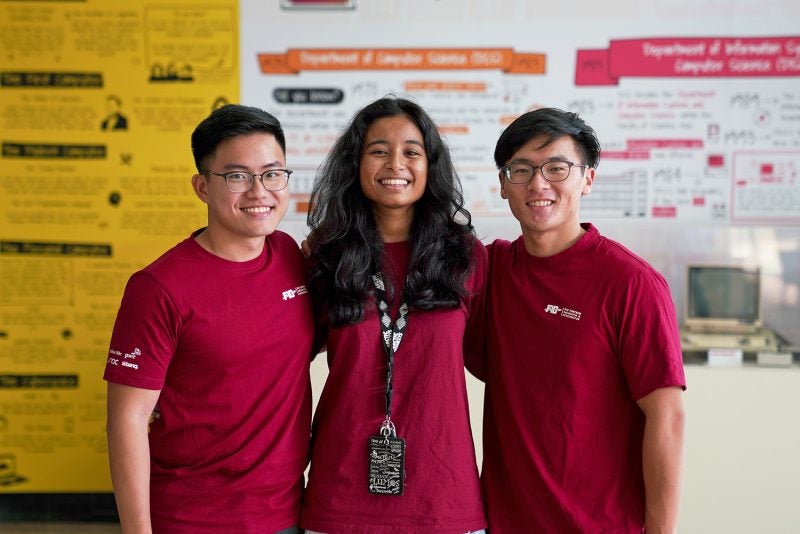14 February 2020 – NUS Computing Associate Professor Roger Zimmermann received the Best Paper Runner-up award at the 6th IEEE International Conference on Cloud Computing and Intelligence Systems (CCIS 2019), held from 19 to 21 December 2019 at Carlton Hotel Singapore.
A total of 40 papers were presented at the conference. The papers were assessed based on their technical quality and the quality of the presentation during the conference.
A/P Zimmermann and his research collaborators received the award for their paper, titled ‘Digital Resource Rights Confirmation and Infringement Tracking Based on Smart Contracts’. One of his co-authors, Peng Qian, conceptualised a part of the work for the paper while he was interning at A/P Zimmermann’s Media Management Research Lab in NUS Computing last semester.
The paper describes a new system that avoids many drawbacks of traditional digital copyright transactions.
“Conventional resource copyright transactions are generally carried out offline by signing a copyright transaction consensus between parties to achieve confirmation. This is time consuming and inefficient,” said A/P Zimmermann.
Other challenges include the difficulty in tracking ownership of digital resources and cases of infringement, as well as the vulnerability of stored transaction data towards tampering and loss.
“Multimedia objects posted on the web are easily accessible by anybody with an Internet connection. It is not easy to actually track copyrights and to know whether any infringements have occurred,” he added.
The system combines the use of smart contracts (programs that run on a blockchain), a blockchain system, and digital watermarking to track digital copyright transactions across platforms and quickly identify the source of leakage when an infringement has occurred.
It works by uploading the transactions, which occur on digital resource platforms, into the blockchain. The cryptographic nature of the blockchain system ensures that information stored on the system cannot be tampered with. Through digital watermarks embedded into each downloaded resource, the source of copyright infringement can be verified and tracked.
For example, when a photographer submits their work to a stock image website, key information related to the copyright of the work, such as the name of the creator, will be recorded by smart contracts in the blockchain. When a user requests to download the image, the smart contracts will check whether they have bought the rights before allowing them to do so.
The downloaded image will contain an invisible watermark unique to the user. When an infringement occurs, the watermark is extracted from the infringed file to determine the user who leaked it. The entire chain of transactions involving this file can also be tracked on the blockchain system.
“There were some earlier techniques that used blockchains to securely store watermark information and provide timestamp authentication, but the use of smart contracts is novel in our work,” said A/P Zimmermann.
He added that winning the Best Paper Runner-up award was an unexpected and pleasant surprise for him and his co-authors.
“Especially for Peng Qian, this was a very well-deserved recognition of his novel ideas and diligent work,” he said.

